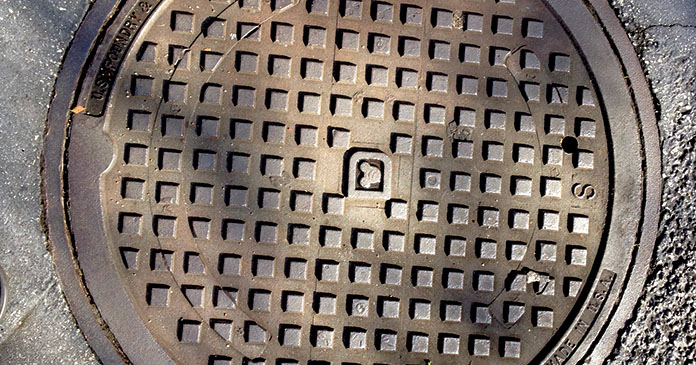Manhole covers have to be one of the most generic, standardized building products one can buy. I suspect that it is a highly competitive market, probably relatively regional, that achieves low cost because almost every plate ordered is the same.
So if Disney decided to order just a few thousand speciallydesigned manhole covers, it probably paid an order of magnitude more per unit for the privilege. For what? It’s a manhole cover, for goodness sake, the kind of thing that is not intended to be seen or to stand out.
The cover made me think of Apple. Adam Lashinsky’s terrific book, Inside Apple: How America’s most admired—and secretive—company really works, documents Apple’s fastidious attention to design and detail. There are famous day-long discussions about a pixel position. There is the desire to make the insides of computers beautiful even though no one will see them. Basically, Apple will spend money on things normal corporations rule out as not being worth it. The sum of that fastidiousness is Apple’s commanding status as the king of design. They paid for it, and despite their current high-market value, they probably still do.
With the mouse on the manhole cover, we see the same thing at Disney: details that don’t need to be there. As I wandered the theme parks and hotels in the days following, I noticed that same attention to detail everywhere. Have you ever looked up in a Disney ride? The ceiling is appropriately themed. If you look at all the fixtures, there is never a neglected spot. Indeed, FoxxFur has gone around documenting this.
This attention to detail goes well beyond physical design. The entire Disney experience is carefully orchestrated (just as it is in Apple retail stores). You can easily find Disney staff to ask questions, and they actually know the answer. It is easy to pay for things. And even waiting in queue for rides is made about as pleasant an experience as one could hope for. Even the hotel room we stayed in was thoughtfully laid out-one of the best I’ve ever seen and enough to cause me to attend a pitch for the Disney Vacation Club.
That said, the exception is the rides themselves. Every time you get on one something goes wrong. We went on Star Tours, expecting a pleasant tour and were thrown unexpectedly into a space battle. On one occasion, we were hijacked by gangsters and twice we had to deviate from a Safari tour or jungle cruise to hunt down poachers. Not even the Muppets went according to plan, as their show was overrun by a three dimensional mutant. It happened literally every single time. The kids found it funny so I suppose it wasn’t too bad. But I digress.
From where did that attention to detail and “the experience” come? A documentary we sat through on Walt Disney’s vision gave a clue. He originally build Disneyland in California because he would take his kids out to do stuff on the weekend and couldn’t really find much that was exciting. Disney decided that there should be a place to go that kids found magical-and that is pretty much what he did. The entire vision for the theme park came from what he thought his own kids would like. The attention to things like a tunnel system, so that Disney characters were never seen out of costume, is something that arose because Disney was looking through the eyes of his kids.
This is precisely the same set of motivations that drove Steve Jobs. One of the reasons he pushed for the iPod and then the iPhone was because he wanted to use them. One could say in each case, the innovations were user-based backed by massive amounts of capital.
Disney’s attention to design detail predates Apple’s by decades. But in each case, the companies approached their work as craft as much as manufacturing. In Disney’s case, the visionary leadership is long gone. In Apple’s, we wait and see. But if Disney’s success is any indication, surely we can be optimistic that Apple will be able to carry on with their current tradition of innovation.
Author: Joshua Gans













